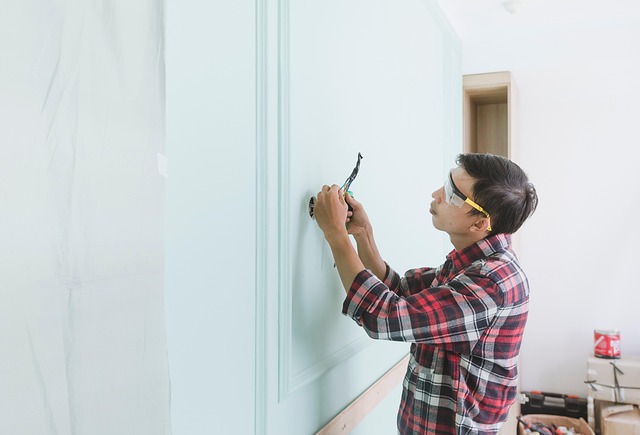Early identification and proactive interior plant maintenance (IPM) are key to preventing pest damage and diseases in indoor plants. Regular inspections for signs like webbing or sticky residue allow for swift action. Cultural controls, physical removal, and eco-friendly biological interventions effectively combat pests while maintaining a healthy ecosystem. Proper care, optimal growing conditions, and balanced ecosystems minimize pest issues through IPM strategies.
Keeping your indoor plants healthy and pest-free is essential for their longevity and visual appeal. This guide provides a comprehensive overview of interior plant maintenance, focusing on pest control and disease prevention. We’ll explore common pests that afflict houseplants, teach you to recognize early signs of infestation, and offer natural prevention strategies. Additionally, effective treatment methods will be outlined to help you tackle any issues promptly.
Understanding Common Indoor Plant Pests
Understanding common indoor plant pests is a crucial step in effective interior plant maintenance. Many pests, such as aphids, spider mites, and mealybugs, are drawn to the nutrients and moisture provided by houseplants. These tiny invaders can cause significant damage, including leaf distortion, yellowing, and even death if left unchecked. Regular inspection of your plants is key; look for any signs of pests, like small webbing or sticky residue, which can indicate an infestation.
Identifying these issues early allows for swift action using appropriate control methods. Simple preventive measures like maintaining good air circulation, ensuring proper watering practices, and regularly cleaning plant surfaces can go a long way in keeping pests at bay. By staying vigilant and adopting proactive interior plant maintenance strategies, you can create a healthy environment for your plants to thrive.
Identifying Signs of Infestation Early
Early identification is key in effective pest control and disease prevention for indoor plants, serving as a cornerstone of robust interior plant maintenance. Regular inspection allows plant owners or caretakers to spot subtle signs of infestation before they escalate. These can include tiny pests like spider mites or whiteflies, visible on leaf undersides, or peculiar spots and discolourations on foliage, which may indicate fungal or bacterial diseases. Even minor changes in a plant’s behaviour, such as wilting or stunted growth, could signal an underlying issue.
By staying vigilant and closely observing plants, potential problems can be addressed promptly. This proactive approach not only saves plants but also prevents the rapid spread of pests and diseases within interior spaces, ensuring healthier and more vibrant indoor greenery.
Natural Prevention Strategies for Plants
Many indoor plants can protect themselves from pests and diseases naturally, especially when provided with proper care and optimal growing conditions. One effective strategy is to maintain a balanced ecosystem within the plant’s environment. This involves ensuring adequate air circulation to prevent fungal issues, as well as providing enough space between plants to reduce competition for resources and minimize the risk of pest transmission.
Regularly cleaning and dusting the leaves of interior plants can also help. Dust acts as a breeding ground for insects, so removing it can deter pests like spider mites and mealybugs. Additionally, using organic or natural pesticides, such as neem oil or insecticidal soap, can be part of an integrated pest management approach. This method promotes sustainable interior plant maintenance while keeping harmful chemicals out of your living or working space.
Effective Treatment Methods for Infestations
Pest infestations can quickly turn into a nuisance for indoor plants, but effective treatment methods are available to combat these issues as part of comprehensive interior plant maintenance. The first step is identifying the specific pest causing damage, as different insects and pathogens require unique approaches. For example, mealybugs, spider mites, or scale insects might be the culprits, each with distinct characteristics and life cycles.
Once identified, several control methods can be employed. Cultural controls, such as regular cleaning and proper watering routines, can significantly reduce pest populations. Physical removal of infested plant parts is also effective for smaller infestations. Additionally, biological interventions like introducing natural predators or using insecticidal soap and neem oil are environmentally friendly options that disrupt the pest’s life cycle without causing lasting harm to the plants.
Proper interior plant maintenance involves a combination of proactive pest control and disease prevention. By understanding common pests, identifying signs early, employing natural prevention strategies, and utilizing effective treatment methods, you can keep your indoor plants healthy and thriving. Regular monitoring and a multi-faceted approach to care ensure that both the beauty and longevity of your plants are preserved, creating a lush and vibrant environment for years to come.
